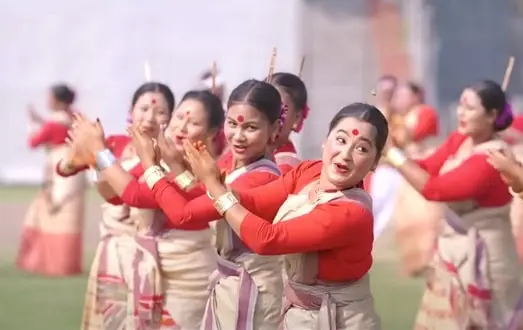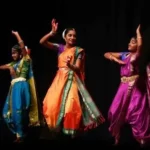The picturesque Assam, located on the Indian Northeastern corner, happens to carry the vibrant cultural history and vibrancy, that attracts the tourists there all the year round. The traditional dance forms of Assam are the best examples of such cultural vibrancy. If one looks at the history and traditions of the state, they may find how much Assam’s cultural heritage is linked with the dances. In this blog, as we make a short brief of these well know dance forms, one can realize how much harmonious their culture is.
Taste of Assam Culture
Assam, the “Land of the Red River and Blue Hills,” has tea plantations, stunning landscape, and the Brahmaputra River. Assam’s culture, including centuries-old dances, complements its natural beauty around.
History of Assamese Dance
For millennia, Assamese dance has been rich and diverse. Religious and cultural origins make this dance vital to Assamese identity. According to ‘BhagavataPurana’ and ‘Kumar Sambhava,’ Assamese dance dates to the 4th and 6th century CE.
Forms of Assamese Dance
Every Assamese dance type has its unique style, costumes, and cultural significance. Some popular Assam dances:
Bihu Dance:

Dance is part of Assam’s biggest event, Bihu. Celebrations of the Assamese New Year and agricultural season are lively. Bihu dances include quick footwork, attractive arm movements, and bright clothes. Young men and women in traditional dress dance in fields or courtyards.The dance celebrates spring, harvest, and rural life. The dhol and pepa accompany this Bihu dance of fertility and abundance.
Sattriya dance:
Sattriya dance, an old Assam dance, originates from Vaishnavite monastic traditions. Saint-scholar SrimantaSankardev invented it in Assam monasteries in the 15th century.Fluidity and grace define this Sattriya dance. It has intricate footwork, emotions, and dance story. In traditional Assamese attire, men and women dance.Sattriya dance depicts Krishna and Assamese mythology.
Bhaona Dance:
The Bhaona Dance is an Assamese theatrical form that mixes drama, music, and dance. It largely recounts Ramayana and Mahabharata.Bhaona storytelling requires dance. Dancers with bright clothing and dramatic movements enhance the tale.The unique Assam cultural phenomenon of bhaona entertains and teaches morals from ancient Indian epics.
Ojapali Dance
The Assam Ojapali Dance is performed at cultural and religious festivals.Ojapalis sing and dance. Colorful face paint and masks are frequent. Dance is rhythmic and dynamic.Ojapali art is vibrant and expressive, passed down through generations. It covers local mythology, history, and culture.
Bagurumba dance
Assam Bodos do the Bagurumba dance.Bagurumba is a Bodo dance. Dancers use bright traditional clothing and jewelry.Bodo dances highlight life’s joys, notably during Bwisagu. Bodo camaraderie and cultural pride are represented by it.
Conclusion
Truly the traditional dance of Assam is a testament to the cultural richness that the state has. These various types of dance forms are appreciated nationwide, making Assam become center for attraction for the culture and dance lovers.
Related Topics
Santosh Kumar, the author behind IndiasStuffs.com, is passionate about sharing valuable insights on a variety of topics, including lifestyle, technology, and Indian culture.
Page Contents

